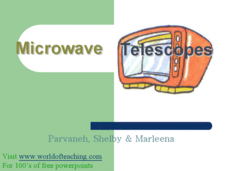Curated OER
Forces in Earth
In this Earth's forces worksheet, students will review the characteristics of earthquakes, including types of faults. Students will interpret a seismograph read-out from an earthquake. Students will complete 10 fill in the blank...
Curated OER
Harmonic Frequencies
In this waves worksheet, students make the nodes, antinodes, waveform, and wavelength for harmonics shown. Students complete 11 fill in the blank questions and 10 problems to solve.
Curated OER
My Flag for the Future
Students study the logo or crest that represents their hometown and describe what it means. They create a new logo for the younger members of their hometown after looking at images of symbols from many other cities and towns.
Curated OER
What Weather When and Where?
Learners learn the difference between hard news and feature writing. They choose one of these news styles to write a compelling weather-related article based on interviews with local sources.
Curated OER
How to verify the relationship between the wavelength and frequency of light
Students collaborate in heterogeneous groups with each student having a different role. They comprehend the relationship between the frequency and wavelength of light. They record their observations in a table that is included on this...
Curated OER
Raven Chapter 10 Guided Notes: Photosynthesis
Kim B. Foglia has designed a comprehensive series of AP biology worksheets. This one focuses learners on the progression of photosynthesis in plants. In this assignment, they identify structures and steps on high-quality diagrams, use...
Facebook
Public Wi-Fi
Sometimes free Wi-Fi comes with a hefty price tag! Networking novices examine the components of a Wi-Fi network during a digital citizenship lesson from an extensive series. Groups work together to map out a day's worth of Internet...
National Woman's History Museum
Getting with the Program
A seven-step lesson introduces the emergence of computer sciences and the contributions women made to the profession after World War II. Several science experiments offer pupils a hands-on learning experience that showcases parabolas,...
California Institute of Technology
Physics of Light
Gummy bears are tasty, but did you know they are also used to determine color and light properties? Use the activity as a way to demonstrate light absorption, light reflection, and refraction with high schooler....
Curated OER
Tsunami Simulation Experiment
Pupils examine an article about tsunami warning systems and discuss why they are important. They conduct an experiment that shows how the velocity of a wave in water changes with the depth.
Exploratorium
Bone Stress
Lighten up a bit with this activity! Use an old-fashioned overhead projector to shine light through a pair of polarizing filters. Place a stressed plastic object in between and display the colors of light waves revealed! Rotate the...
Curated OER
Tide Pool Discovery
First graders visit the Discovery Pool, where they use their senses to investigate the different tide pool species. They touch different species. Students describe how each one feels, and what they look like in words. They draw the...
Curated OER
How Do Bats Navigate At Night?
Through an experiment, learners explore how bats use echolocation. First, they discuss how sound travels through air waves. Then, they talk about the ways bats navigate in the dark. As an extension, they can write about what they have...
Curated OER
Are You My Mother Game
Invite your kindergarteners to explore sound and hearing. Using film canisters, or containers, filled with items from the story "Are You My Mother?" they will predict what the objects were from the story. Tip: you could create a...
Curated OER
History of Physics
In this history worksheet, young scholars use the questions to discover meaningful science and history connections. The worksheet is meant to be viewed online to access individual answers.
Curated OER
Why Be Active?
What are some of the benefits of physical activity? Young learners take a look at not just the physical benefits, but also the emotional and social benefits of being physically active. There is a heart rate activity to count their...
Curated OER
Earthquake
Pupils view a video and conduct a problem solving activity to explain the effect different waves have on the earth's structure and what effect they have on different structures.
Curated OER
Energy: Light -- Spinning Color Wheel
Second graders make spinning color wheels to determine how energy effects what colors look like. They paint or color a color wheel with the seven colors of the spectrum. Next, the spin the wheel to determine what happens. In order to...
Curated OER
Microwave Telescopes
Discovery of microwaves and other trivia starting this PowerPoint will help interest your class in the application and behavior of these radio waves. Great images to show real-life experiments and equipment help understanding of how the...
Curated OER
Worksheet 19 - Topographical Maps
In this map worksheet, students use information from given topical maps and locate the maxima and solve one dimensional wave equations. This two-page worksheet contains four problems.
Curated OER
Immigrating to America
Coming to America as an immigrant can be an emotional and difficult process. This lesson has learners explore what it means to be an immigrant, listen to real life accounts, and visit an online museum. This is a wonderful discussion...
Curated OER
Sand Castle: Lesson 29
The story Sand Castle is the basis for each of the four learning activities found on this activity. Learners will write spelling words, fill in the blanks, compose sentences, and answer comprehension questions relating to the story....
Curated OER
Layers of the Atmosphere Foldable
Aspiring meteorologists make themselves a tool for reviewing the characteristics of each layer of the atmosphere. The procedure for this little project divides the paper into five sections, but many earth science teachers opt for the...
Curated OER
Bronx Cheer Bulb
If you chew or make a "raspberry" while viewing an LED light source, the light will appear to wiggle or flicker. It is not because of the light itself, but because of the vibration of your skull! Have your physics class give this a try...























